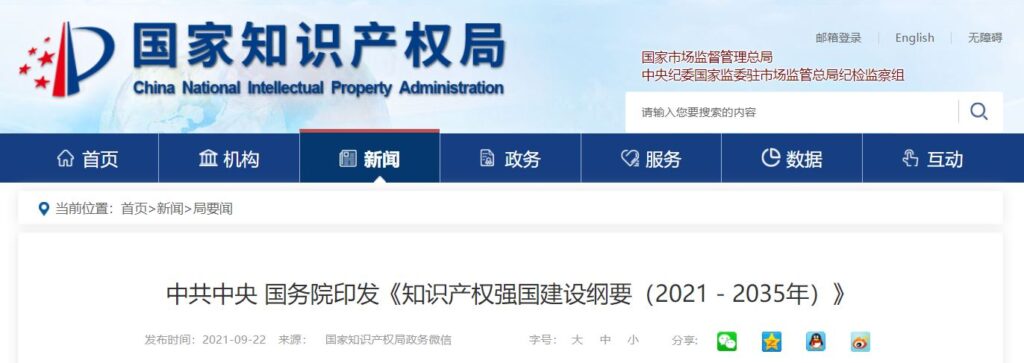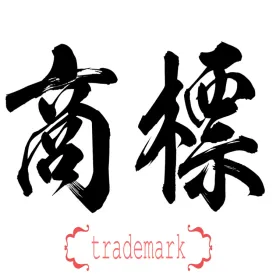On September 22, 2021, the Central Committee of the Communist Party of China and the State Council issued the “Guidelines for Building a Powerful Country with Intellectual Property Rights (2021-2035)” (知识产权强国建设纲要(2021-2035年)). The Guidelines set numerical development goals for intellectual property as well as other goals such as “deep participation in global intellectual property governance.”

For numerical goals, the Guidelines set a goal for 2025 as
By 2025, remarkable achievements shall have been made in the building of a powerful intellectual property nation, the protection of intellectual property shall be more stringent, social satisfaction shall have reached and remained at a relatively high level, the market value of intellectual property shall have been further highlighted, brand competitiveness shall have been significantly improved, the added value of patent-intensive industries shall have accounted for 13% of GDP, the added value of copyright industries shall have accounted for 7.5% of GDP, the total annual import and export amount of intellectual property use fees shall have reached 350 billion yuan, and the number of high-value invention patents per 10,000 people will reach 12.
Note that the Guidelines do not define what are patent-intensive or copyright-intensive industries are, nor what are “high-value patents.” Numerical goals for 2035 were not released.
The Guidelines also set more general goals including:
However, as Jacob Schindler, Editor at IAM, has pointed out to me, CNIPA has previously defined high-value patents as:
1. invention patents in strategic emerging industries;
2. invention patents that have the patent family overseas;
3. invention patents with a validity span of more than 10 years;
4. invention patents with higher number of pledge financing; and
5. invention patents that have won the National Science and Technology Award or China Patent Award
The State Council has previously defined patent-intensive industries here.
Constructing an intellectual property system oriented to socialist modernization
Constructing an intellectual property protection system that supports a world-class business environment
Constructing an intellectual property market operating mechanism that encourages innovation and development
Constructing the Public Service System of Intellectual Property Right for the Convenience and Benefit of the People
Constructing a Humanistic Social Environment for Promoting the High Quality Development of Intellectual Property Rights
Deep participation in global intellectual property governance
Organizational Strengthening
Each goal has several paragraphs defining the goals more specifically. Unfortunately, explicitly increasing transparency of the judicial system does not seem to be listed (although it is mentioned for administrative enforcement). As Mark Cohen of UC Berkeley has mentioned in his blog, “The lack of a strong commitment to judicial transparency in IP litigation was a singular weakness of the Phase 1 Trade Agreement.” He cites transparency requests filed by the European Union with the WTO on several Standard Essential Patent cases in China. Specifically, the judicial opinions for Oppo v. Sharp, Xiaomi v InterDigital, and Samsung v. Ericsson were never published (although the Oppo v. Sharp decision did later appear on several Chinese WeChat accounts). China later denied the requests basically stating that China has no obligation to respond.
The full text of the Guidelines is available here.



 />i
/>i
